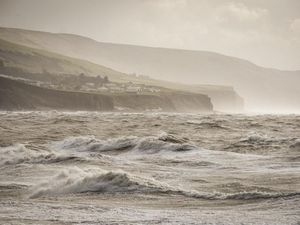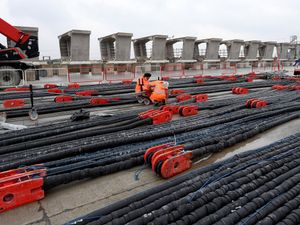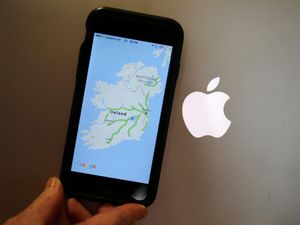‘Biological pump’ in ocean capturing twice as much carbon than thought – study
The findings could have implications for future climate assessments, researchers say.

The “biological pump” in the world’s oceans, which plays a key part in the global carbon cycle, is capturing twice as much carbon than previously thought, scientists have said.
The biological carbon pump (BCP) contributes to the role of the ocean in taking up and storing carbon dioxide (CO2) by removing the gas from the atmosphere, changing it into living matter, and distributing it to the deeper ocean layers.
Without the BCP, the atmospheric concentration of CO2 would be much higher.
The researchers said their findings, published in the journal Proceedings of the National Academy of Sciences, could have implications for future climate assessments.
Single-celled organisms, called phytoplankton, live on the ocean’s surface and use sunlight to make food and energy – taking up CO2 and releasing oxygen in the process.
When phytoplankton die, they are eaten by other marine creatures, like zooplankton.

And once these creatures die, they become biological debris, known as marine snow, that are rich in carbon and fall deeper into the ocean, a key process in the BCP.
However, the phytoplankton’s ability to absorb C02 depends on the amount of sunlight able to penetrate the ocean’s upper layer.
Researchers set out to measure the depth of the ocean’s sunlit surface area or euphotic zone, using a technique known as chlorophyll fluorescence detection that looks for the presence of photosynthetic phytoplankton in the deeper layers of the ocean.
The found the depth of the euphotic zone, which is where most of the marine species live, to significantly vary throughout the world.
Combining their findings with data from previous studies of the BCP, the authors were able to estimate the rate at which carbon particles are sinking.

They found that about twice as much carbon sinks into the ocean per year than previously estimated.
Study leader Dr Ken Buesseler, a geochemist with the Woods Hole Oceanographic Institution, a US research institute dedicated to the study of marine science, said: “If you look at the same data in a new way, you get a very different view of the ocean’s role in processing carbon, hence its role in regulating climate.”
Researchers believe using their method to assess the BCP could lead to more accurate climate models that could help shape the global climate policy.
Dr Buesseler added: “Using the new metrics, we will be able to refine the models to not just tell us how the ocean looks today, but how it will look in the future.
“Is the amount of carbon sinking in the ocean going up or down? That number affects the climate of the world we live in.”





